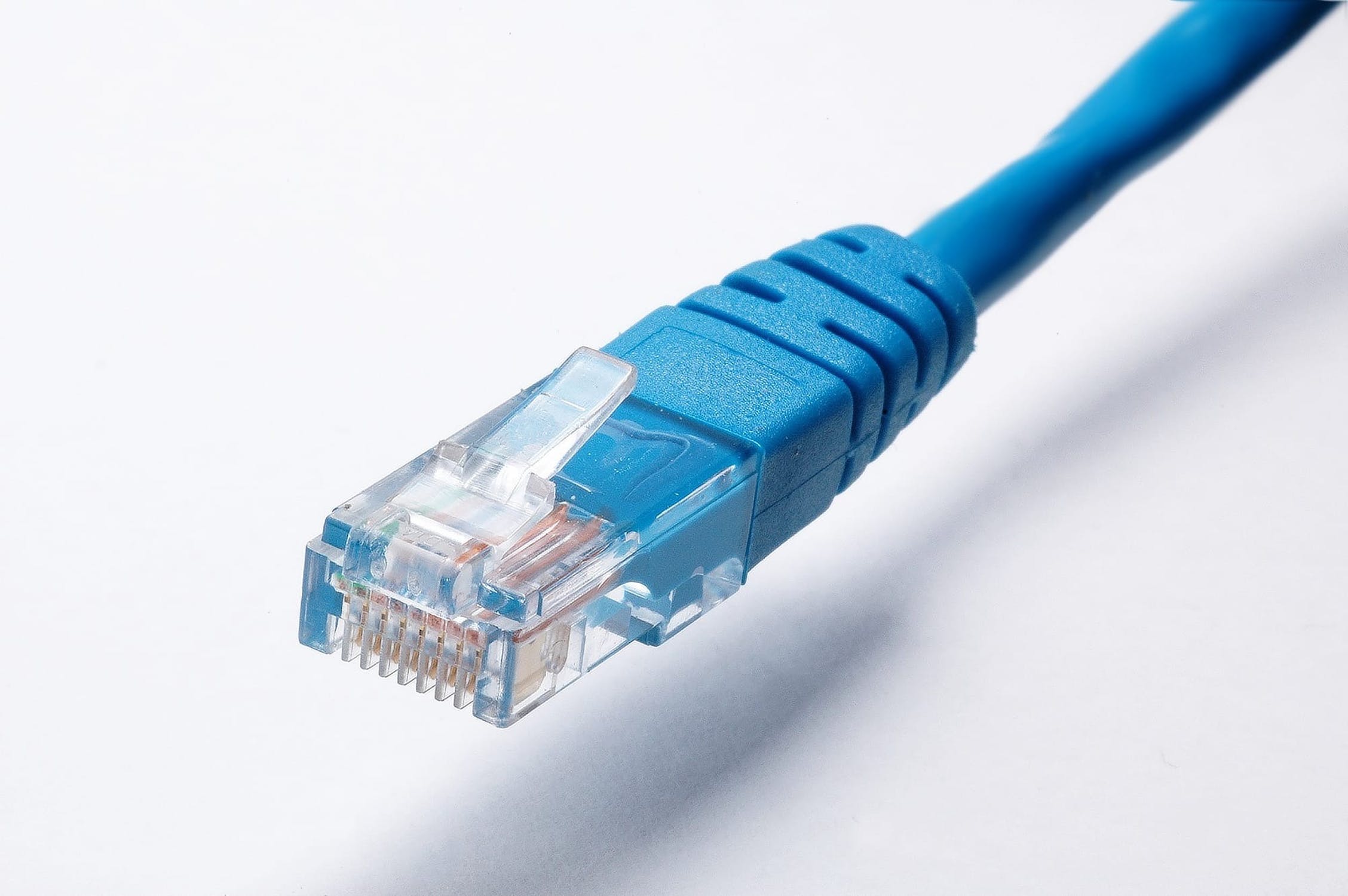We have been tied to the internet for decades now and as the Internet of Everything becomes more populated every day, it is important to understand how we are connected to that world. Using Ethernet cables has become second nature to Gen Z, but what are they, how do they work, and what are some alternatives?
What is an Ethernet cable?
In the most basic terms, an Ethernet cable connects your computer to the internet. Lifewire has a similarly basic overview of Ethernet cables in a short video here. While that may seem basic, there is a lot more going on to allow us to transmit information across the world.
Once upon a time, the only way to get a message across the ocean was to send a letter. Now, we have thick cable lines that connect the continents, and to connect us to them are different types of Ethernet cables.
An Ethernet cable is very similar to a phone cable in both look and function. Using copper wiring, signals are transmitted from one end to another. While phone cables are made to transmit sound, they are capable of transmitting the internet. Ethernet cables, however, do it more efficiently and have a broader bandwidth both physically and for the information from the internet to travel through. With a broader bandwidth, they are able to transmit more efficiently which brings higher speeds.
Ethernet cables also come in a few different categories, referred to as CAT followed by a number. The most common of these cables is CAT5. This is likely that you have in your home to connect the internet to your modem. CAT6 is the next generation of cable. For more information on Ethernet cable types, Enable It has an in-depth article about the different types and what each is used for. They go into detail about the physical differences as well as how information is transmitted with each.
Why Ethernet Cables?
Back in the early days of the internet, phone lines were used to transfer information. As you can imagine, the information transferred back then was a little smaller in file size than now. Not only was this a problem when sending large files, but it was also a problem if you needed to use your phone and internet at the same time.
When the internet started to gain traction, people began searching out ways to make it faster. Cables Radar tells us while phone lines can still be used today, it is much more efficient to use an Ethernet cable because of the bandwidth difference, https://cablesradar.com/ethernet-cable-vs-phone-cable/. Before Ethernet cables were widely available, however, people focused on making their portion of the internet smaller to allow more people access. Eventually, people began to turn to the physical side of the transportation system to allow better access.
From a need for more interaction with a wider audience rose the Ethernet cable. This cable could handle more information at once. It was finally faster to send a large file via the internet than on a floppy disc in the mail thanks to Ethernet cables.

How Do We Use Ethernet Cables Today?
Most of us use an Ethernet cable in our day-to-day lives. We leave them plugged into our computers, consoles, and even some TVs. Often, we rely more on wireless internet to plug in and stay connected, but on the back of our modems is an Ethernet cable. This cable reliably sends information to and from our modem and anything connected to it.
Where does the information go once it leaves the modem? There is a great scene in the Disney movie, Ralph Breaks the Internet where the main characters use wires to go to the internet via a newly installed modem. This is like how your information is sent into the world. For a more detailed look at how Ethernet is installed, click here. You do not necessarily need to know how to install Ethernet cable yourself but learning about how your information is sent to another person, in another house, possibly hundreds of miles away, is incredibly fascinating.
Final Thoughts
Ethernet cables may have a similar look to phone cables but are much more evolved. We are currently heading towards using CAT6 as a standard cable, which will allow us faster internet speeds. As our need for interactivity and a constant influx of information grows, so will our need for better Ethernet cables.
Soon enough, we might find ourselves plugging in the next generation of cable to our modem and using a chip in our brain to access the information. While glasses that connect us to the internet were once bulky and awkward to use, especially when you already have corrective lenses, perhaps they might be more useful if they were plugged in like a computer.
In our evolving world, speed is key and as we crave faster speeds, Ethernet will continue to evolve to fit them. These cables have been a vital asset when handling the internet for decades and as we approach greater speeds, we may keep them evolving or move on to a new type. When the internet begins its next evolution, perhaps we’ll need cables with 16 connections rather than Ethernet’s 8. Humans will always be searching for the next step in keeping connected with one another and being heard. As we evolve and connect, so must the tools we use to make this ever-evolving world work best for us.








